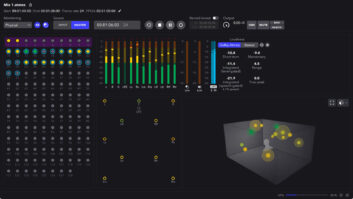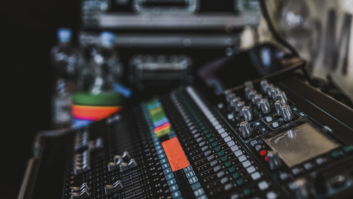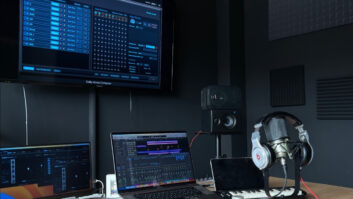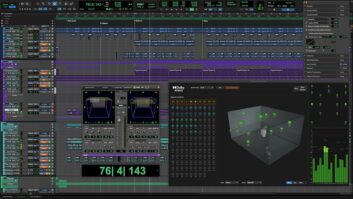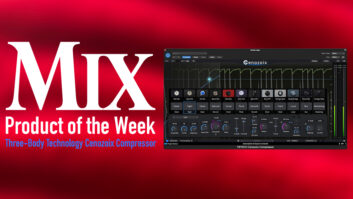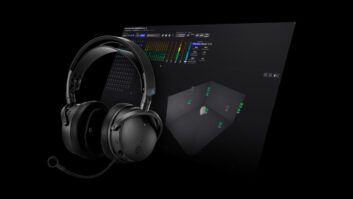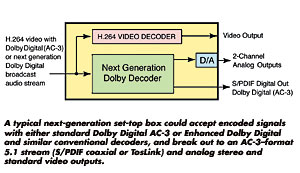
One of the biggest announcements at this month’s NAB show will notbe a product, per se, but the debut of a new audio compressionprotocol. Representing the second generation of Dolby Digital, theunnamed process will be unveiled in ongoing demonstrations to thebroadcast and production communities.
Given the real-life limitations in bandwidth that seem to followevery signal delivery chain — traditional terrestrialbroadcasting to Internet streaming — the need to maximize thenumber of available channels into ever-smaller data pipelines is great.And with emerging services such as video-on-demand and DTV bringingbroadcasters the capacity for alternate channels, there is no chancethat this trend will slow down — ever.
“Squeezing more services over the same bandwidth requires moreefficient codecs, both in audio and video,” says Dolby’sbroadcast product manager, Jeff Riedmiller. “On the video side,most people are familiar with protocols such as H.264. On the audioside, we’ve developed the next generation of Dolby Digital.”
An enhanced version of Dolby Digital makes sense for consumers,hardware manufacturers, software developers, content producers andbroadcasters. Consumers are hardly warm to the idea of having to changehardware every few years due to the debut of new — andincompatible — playback schemes, so backward compatibility wasdeemed essential.
“In considering the development of this, we focused on fourkey points,” Riedmiller explains. “The first iscompatibility. This new system must have the ability to work with the37 million existing multichannel decoders in use in people’s homes.Obviously, any enhancements we make to the system must be compatiblewith those users, and this new format does provide a path to thoseexisting Dolby Digital decoders. We also wanted to be more efficient interms of perceptual audio coding itself, yet at the same time, offer aknown quality at a lower bit rate for spectral efficiency. Everybody’slooking for the ability to send the same quality picture with audio butwith less bits, particularly in broadcast, using limited satellitebandwidth. This enhanced Dolby Digital addresses that need.
“Another factor is cost,” he continues, “and as wecan maintain compatibility with existing Dolby Digital decoders,there’s a cost savings to any new implementer. via the enhanceddecoder’s ability to decode both legacy and enhanced Dolby Digitalbitstreams, as well as provide a seamless Dolby Digital bitstream forcarriage over S/PDIF or Toslink interfaces to multichannel home theatersystems.”
But equally important is the ability of any proposed standard towork with formats that are on the horizon. “Four or five yearsago, some of the premium services on cable [as well as terrestrial TV]started offering 5.1 programming because viewers were used to watchingDVD in 5.1 surround and they wanted that on television, as well,”says Riedmiller. “We also envision this technology being used onthe high-definition fixed media that will be coming in the future, suchas high-definition DVD and things like that, which have always driventhe other side of the business.”
The whole point of perceptual audio coding is to reduce bandwidthand storage requirements while maintaining quality. What data savingswould this new codec offer over existing Dolby Digital files? “Itdepends on the content, but it’s also governed by the quality that thebroadcaster wants to convey,” says Riedmiller. “We give ourcustomers the ability to scale the content any way they’d like. InDolby Digital today, we recommend that people encode stereo content at192 kbits/second. There are people running the bit rate quite a bitlower than that in stereo and have great results with it. But with thisenhanced format, we’re confident that in stereo, you could get that192k rate down to 96k.”
Bandwidth aside, does this enhanced system also support all of thecool, creative control features in the audio metadata, such as dynamicrange control, dialog normalization and downmixing? According toRiedmiller, all of the Dolby Digital audio metadata is preserved in thenew system, and the next generation of decoders will be able to playboth existing Dolby Digital and the enhanced format with all ofmetadata intact.
“This new process is still in the early stages, so we won’t beshowing hardware systems, but we will be doing technology demonstationsfor existing service providers, cable systems and satellite servicesworldwide who may be looking at their next-generation set-topbox,” explains Riedmiller. “Certainly, local broadcasterswon’t need to worry about this right away, but if you’re a satelliteprovider who wants to carry more channels of high-definition video,you’ll need a new video coding system. We’re offering the new audiocoding system to complement this new video codecs such as H.264.
“We’re excited about this and look forward to telling theworld about this at NAB,” says Riedmiller, who added that Dolbywould be providing active listening demonstrations of the system at itsbooth during the show. “We’re unveiling the capabilities ofenhanced Dolby Digital for the broadcast market at NAB. Applicationsfor the enhanced version could include satellite broadcast, cabletelevision, video-on-demand, terrestrial broadcasting and fixed media[DVD, etc.]; pretty much anywhere you’d find AC-3 today, we’d expect tofind the enhanced version. It could also apply to toys, games andwireless, as well as going into the other spectrums where there are nobandwidth constraints. The system is also capable of going beyond 5.1,and there are provisions for that.”

